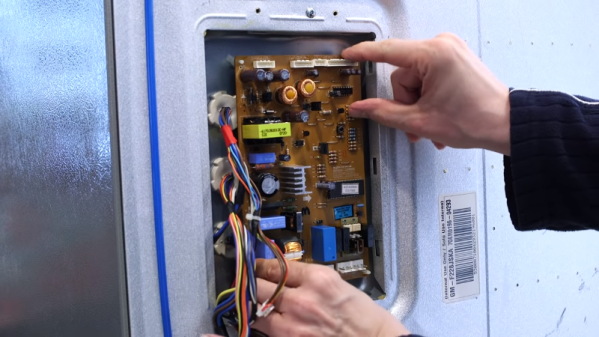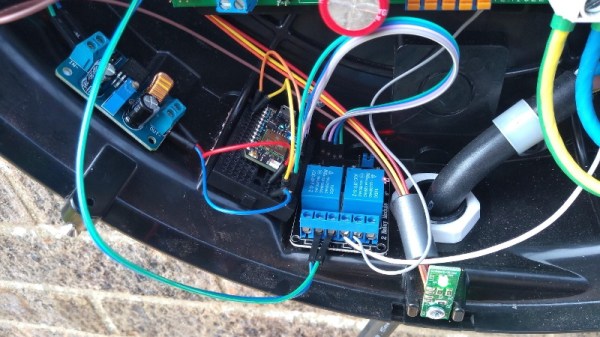A dead refrigerator is an occurrence determined to frustrate any homeowner. First there’s the discovery of hundreds of dollars in spoiled food, and then the cost of a repair call and the delay of the inevitable wait for parts. It’s clear to see why a hacker like [Mr. Carlson] would seek another way.
Now, normally a fridge repair video would by unlikely fodder for a Hackaday article. After all, there’s generally not much to a fridge, and even with the newer microprocessor-controlled units, diagnosis and repair are usually at the board-level. But [Mr. Carlson] has had this fridge since 2007, and he’s got some history with it. An earlier failure was caused by the incandescent interior lights welding relay contacts closed thanks to huge inrush currents when starting the cold filaments. That left the light on all the time, heating the interior. His fix was a custom solid-state relay using zero-crossing opto-isolators to turn the bulbs on or off only when the AC power was at a minimum.
That repair kept things going for years, but when the latest issue occurred, [Mr. Carlson] took a different tack. He assumed that a board that has been powered 24-7 for the last twelve years is likely to have a bad capacitor or two. He replaced all the caps, threw in a few new relays to be on the safe side, and powered the fridge back up. It whirred back to life, ready for another decade or so of service.
Kudos to [Mr. Carlson] for his great repair tips and his refusal to surrender. The same thing happened when his solder sucker started to give up the ghost and he fixed it by adding a variable-frequency drive.



















